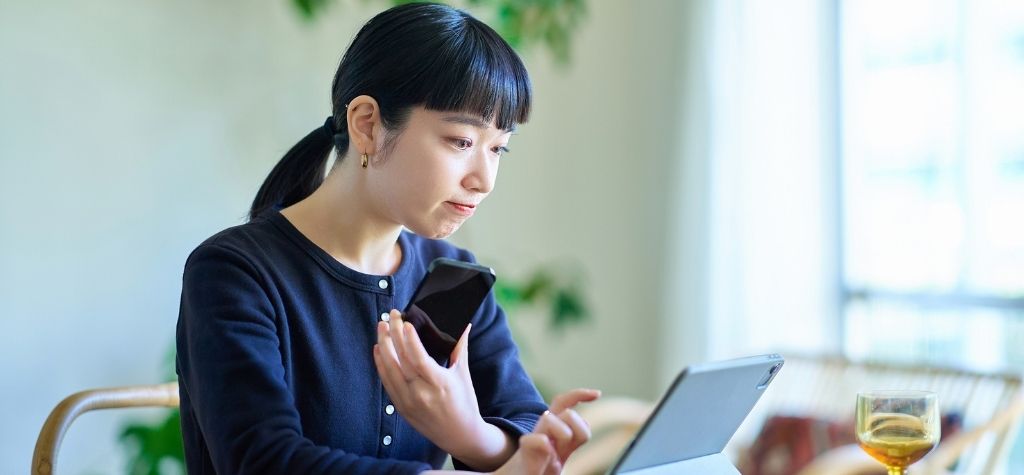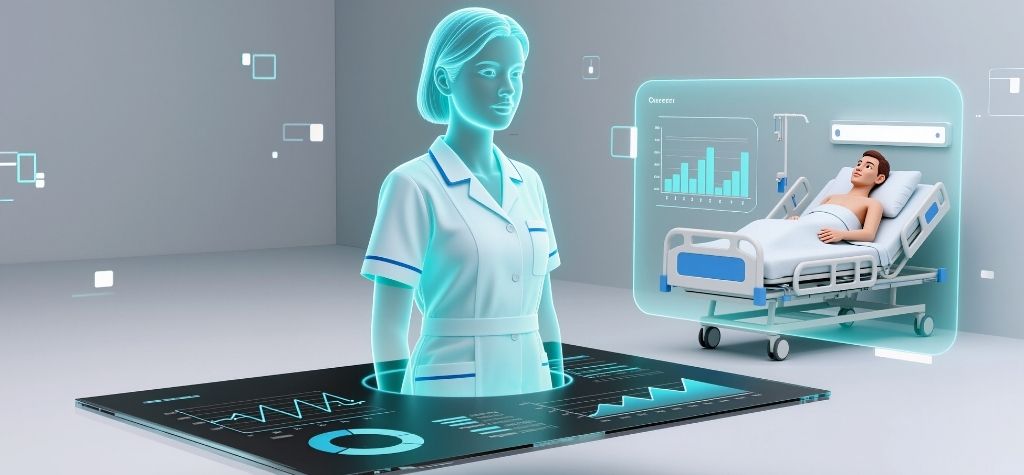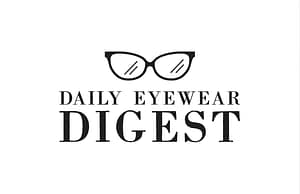Introduction: A virtual revolution in eye care

Imagine getting your eyes examined without leaving your house. During the COVID‑19 pandemic many eye‑care providers learned to deliver care over video calls and remote devices. Today, tele‑optometry has grown beyond emergency video visits. It now encompasses remote refraction, store‑and‑forward screening, home monitoring for diseases like glaucoma and age‑related macular degeneration (AMD), and artificial intelligence (AI) tools that analyze images captured outside the clinic. By 2026, tele‑optometry is poised to transform access to eye care, especially for people who live far from clinics or face mobility or cost barriers.
This article explains what tele‑optometry is, summarizes its current evidence, and predicts what the field could look like by 2026. We also discuss benefits, limitations and key technologies that support virtual eye care. The goal is to help patients and practitioners understand how remote services can complement in‑person care rather than replace it.
What is tele‑optometry?
Tele‑optometry refers to the use of telehealth technologies to deliver optometric services when the patient and the practitioner are in different locations. It encompasses synchronous consultations (real‑time video visits), asynchronous “store‑and‑forward” services (images and data collected at one point are reviewed later), remote monitoring and virtual diagnostic tests. A 2022 systematic review of optometry‑facilitated telehealth noted that tele‑optometry is emerging as a promising adjunct to in‑person care and emphasized that the pandemic accelerated adoption. Telehealth, a broader term, includes preventive, promotive and curative services, whereas telemedicine focuses on clinical care.
Synchronous vs. asynchronous care
- Synchronous tele‑optometry uses video or audio calls to connect patients and practitioners in real time. Examples include urgent care consultations, contact‑lens follow‑ups and low‑vision rehabilitation.
- Asynchronous services involve capturing clinical data—like retinal photographs or intraocular pressure—and sending it to a remote provider for assessment. Diabetic retinopathy screening and retinopathy of prematurity programs often follow this model.
Why tele‑optometry matters
Many groups struggle to access eye care. Rural residents, older adults, veterans and people with disabilities often live far from clinics or lack transportation. A report on remote monitoring noted that only 5 % of cardiovascular clinical trial sites were located in rural areas, with rural participants traveling a median 24.2 km to reach care compared with 4.5 km for urban patients. Similarly, a 2023 analysis of the IRIS Registry found blindness rates were higher in rural populations and among those with public or no insurance. Telehealth can reduce travel time and cost, increasing access to care for vulnerable groups.
The Veterans Affairs (VA) health system illustrates tele‑optometry’s potential. The Technology‑based Eye Care Services (TECS) program launched in 2015 to screen veterans for high‑risk eye diseases and improve access. In its first four years the store‑and‑forward program collected data at primary care clinics and delivered care remotely, improving overall health for an underserved population. A recent national analysis found TECS served 21,712 veterans in 2021—52 % of whom were rural or highly rural—with an 83.6 % site‑sustainability rate from 2015 to 2022. Rural veterans were 1.3 to 2.5 times more likely to be diagnosed with vision‑threatening disease than urban veterans, underscoring the need for remote services.
Current landscape of tele‑optometry (2024‑2025)

Adoption rates and patient satisfaction
- Rapid adoption: A 2025 article in Optometric Management reported that 77.4 % of eye‑care providers now offer telehealth or tele‑optometry services. Early pandemic adoption focused on maintaining patient care during social distancing, but many practitioners have continued because of its value in expanding accessibility and convenience.
- High satisfaction: A 2022 systematic review noted that although the evidence base is small, the tele‑optometry studies available report high patient satisfaction. In rural Western Australia, patients valued optometrists’ role during tele‑ophthalmology consultations. Low‑vision telerehabilitation programs found patients perceived remote evaluations as accurate and appreciated additional follow‑up opportunities. Older patients even showed greater acceptance of remote care.
- Provider participation: In India’s Karthikeyan et al. survey, 50.94 % of optometrists offered tele‑optometry services at the beginning of the pandemic, but 85.19 % did not charge for them. This underscores the need for reimbursement models and policies to support sustainable tele‑optometry.
Tele‑refraction and remote exams
One of tele‑optometry’s biggest challenges is providing accurate refractive measurements remotely. Recent studies show promising results:
- Tele‑refraction accuracy: A 2024 PLOS One study compared real‑time tele‑refraction performed by trained technicians with face‑to‑face (F2F) optometrists. Tele‑refraction achieved 84.6 % conformity for spherical correction and 81 % for spherical equivalent, with the mean difference only 0.11 diopters. Remote optometrist guidance improved spherical equivalent conformity by 14.8 % over objective refraction. Best corrected visual acuity matched in 82 % of eyes, and 92 % were within 0.1 logMAR. Although tele‑refraction struggled with cylindrical axis (74 % within 10°), the study concluded remote refraction was comparable to F2F refraction and could address optometrist shortages.
- Comprehensive tele‑eye exams: A 2024 randomized study compared comprehensive tele‑eye exams with in‑person exams. Tele‑refraction showed good to excellent agreement in sphero‑cylindrical power and visual acuity, and there was no difference in visual comfort. Ocular health assessment agreements ranged from fair to almost perfect, but provider confidence and patient satisfaction were higher during in‑person exams. The authors concluded that tele‑eye care is non‑inferior for refraction but requires more research to evaluate ocular health assessments.
Remote monitoring and AI‑driven tools
Digital health tools can extend care between visits. In eye care these tools include AI algorithms, home devices and smartphone attachments.
Diabetic retinopathy and autonomous AI
A 2024 randomized study tested an autonomous AI diabetic eye exam at a pediatric diabetes clinic. It randomly assigned 81 patients to receive an AI exam at point of care and 83 patients to receive a traditional referral. Within six months, 100 % of patients in the AI‑exam group completed a diabetic eye exam compared with 22 % in the referral group. Among those whose AI results indicated follow‑up was needed, 64 % completed follow‑up compared with 22 % of controls. This demonstrates how AI and point‑of‑care diagnostics can dramatically improve screening completion in rural settings.
Home tonometry
Glaucoma care relies on monitoring intraocular pressure (IOP). The iCare Home and iCare Home2 devices allow patients to measure IOP at home. A pivotal study reported that home tonometry detected therapy‑related IOP changes and produced measurements within 5 mm Hg of office‑based Goldmann tonometry in 91 % of cases, with a mean difference of 0.33 mm Hg. Notably, 89 % of users said they would recommend the device to other glaucoma patients. Optometrists can loan or prescribe the device, and results are transmitted via web portal.
Smartphone‑based fundus photography
The PanOptic iExaminer attaches to an iPhone to capture optic‑nerve images. A 2021 study in Samoa showed that this low‑cost system identified glaucoma‑risk characteristics in 16 % of 206 participants. Of those referred for specialist evaluation, 94 % met criteria for potential glaucoma. This illustrates how smartphone tools can bring screening to underserved regions with few ophthalmologists.
Virtual reality visual‑field testing
The VisuAll Virtual Reality Platform (VRP) is a headset for home visual‑field testing. A 2024 feasibility study compared VRP results with the Humphrey Field Analyzer (HFA) after three days of home testing. The study found significant correlations in five of six visual‑field sectors and that VRP tests were shorter than HFA tests. While more data are needed, VRP could help glaucoma patients in remote settings monitor disease progression.
Remote monitoring for AMD
The ForeseeHome system monitors hyperacuity to detect conversion from intermediate to wet AMD. Patients perform tests at home, and a monitoring center notifies their doctor if results suggest disease progression. The pivotal HOME study found ForeseeHome effectively detected choroidal neovascularization and led to better visual acuity outcomes after anti‑VEGF therapy. Real‑world studies showed median visual acuity improved from 20/30 at baseline to 20/39 at conversion and returned to 20/32 after treatment. Remote AMD monitoring could be especially beneficial for rural patients who have difficulty traveling to clinics.
Tele‑optometry as a collaborative model
Tele‑optometry often involves collaboration between optometrists, technicians and ophthalmologists. Studies report that comanagement improves efficiency and access. In the VA system, tele‑optometry increased the proportion of veterans booked directly for surgery to 44 %, reducing unnecessary in‑person visits. Collaboration also provides learning opportunities for optometrists and can triage specialist referrals more effectively.
Low‑vision telerehabilitation
Telerehabilitation programs deliver low‑vision evaluations and training via video. Bittner et al. found that patients were comfortable receiving low‑vision services remotely and that remote assessments were perceived as accurate. Telehealth allowed follow‑up sessions that would not occur in person, improving access to vision aids that significantly enhance quality of life.
Key drivers of tele‑optometry’s growth

The COVID‑19 catalyst
The pandemic forced clinics to close or restrict in‑person visits. According to the systematic review, optometry practices in Pakistan delivered only 5.54 % of services in person during the initial lockdown. Tele‑optometry enabled providers to continue care while protecting patients and staff. Even as restrictions lifted, many providers retained telehealth because it increased access and convenience.
Rural health disparities and cost barriers
People living in rural areas often travel long distances for care, face provider shortages and have higher rates of poverty and uninsured status. The review noted that telehealth can reduce travel time and cost for vulnerable groups. Optometrists in rural locations benefit from tele‑ophthalmology by gaining access to specialist consultation and learning opportunities.
Advances in technology
- High‑speed internet and cloud platforms allow real‑time video and data transmission.
- AI and machine learning help analyze retinal images for diabetic retinopathy, myopia progression and strabismus detection. For example, researchers developed REDNet, a network that extracts refractive status from photorefraction images for remote screening. It achieved 89.5 % accuracy for spherical power and 96.7 % for cylindrical power. Another deep‑learning model detected strabismus and ptosis with about 80 % accuracy, demonstrating AI’s potential in tele‑ophthalmology.
- Portable devices like the iCare Home tonometer, PanOptic iExaminer and ClickCheck refractive device (used in the tele‑refraction study) make home testing feasible. ClickCheck uses a Badal optometer principle and is inexpensive and portable.
- Virtual reality headsets enable home visual‑field testing and may soon integrate other diagnostics.
Consumer demand and convenience
Patients appreciate being able to consult providers from home. Tele‑optometry is particularly valuable during bad weather, for those with mobility issues or for parents who need to coordinate child care. Patients with chronic conditions can monitor changes more frequently without extra travel.
Evolving regulatory environment
Professional organizations are drafting guidelines to ensure tele‑optometry is delivered safely. The American Optometric Association (AOA) emphasizes that data gathered through direct‑to‑patient apps does not constitute a complete eye exam and that fragmenting exams into separate components can be misleading. Tele‑optometry should adhere to the same standards of care as in‑person exams. As tele‑optometry becomes more common, regulatory and reimbursement frameworks will need to catch up.
Challenges and limitations
- Evidence gaps: Tele‑optometry research remains limited. The systematic review highlighted the scarcity of evidence surrounding clinical benefits, safety and outcomes, calling for more studies. Many telehealth studies focus on specific diseases rather than comprehensive care, making it hard to generalize findings.
- Policy and reimbursement: Few countries have policies or protocols guiding tele‑optometry. In the VA system, only one study reported financial incentives for optometrists to deliver telehealth. Without reimbursement models, providers may be reluctant to invest in tele‑optometry.
- Training and infrastructure: Tele‑refraction requires trained technicians and reliable internet. In underserved regions, internet access and device availability may be limited. The tele‑refraction study highlighted that technicians needed more training to accurately detect cylindrical axis.
- Data security and privacy: Storing and transmitting health data remotely raises privacy concerns. Providers must comply with regulations like HIPAA and ensure secure platforms.
- Patient safety and misdiagnosis: Self‑administered online exams may duplicate expired prescriptions without comprehensive evaluation. A 2024 commentary warned that online prescription services often rely on self‑reported visual acuity and can be easily gamed, risking missed diagnoses. The AOA states that breaking a comprehensive exam into independent components is deceptive.
- Human connection: Tele‑optometry cannot fully replace the rapport and tactile assessments of in‑person visits. The tele‑eye exam study found that both providers and patients were more satisfied with in‑person exams.
- Digital divide: Patients without smartphones, computers or high‑speed internet may be excluded. Addressing this divide is essential for equitable access.
Tele‑optometry in 2026: projections and emerging models

By 2026, tele‑optometry is likely to move from being an emergency solution to an integrated part of eye care. The following trends and models may shape its future:
Blended care models
Most experts agree tele‑optometry will complement, not replace, in‑person care. Routine comprehensive exams will remain in person, but many elements—like preliminary history, screening for diabetic retinopathy or glaucoma, and postoperative follow‑ups—will shift online. Clinics may adopt hybrid models in which technicians collect data in local satellite centers or mobile vans, and optometrists review the results remotely. Patients could then be triaged for necessary in‑person visits. This model aligns with TECS, which has shown that store‑and‑forward services can screen large populations successfully.
Expanded remote diagnostic capabilities
Advances in AI and sensors will expand what can be measured remotely. Portable OCT devices could allow home retinal imaging. Wearable smart glasses might track eye movements to detect early neurological or ocular disease. AI algorithms integrated into devices will provide preliminary analysis, alerting providers to abnormalities. As AI models become more accurate, they will help triage patients by urgency, ensuring timely intervention.
Virtual reality and augmented reality for rehabilitation
VR platforms could deliver immersive vision therapy and low‑vision rehabilitation. Current telerehabilitation programs for low vision already provide evaluations and training by video. VR could simulate real‑world environments and teach navigation, reading and depth perception skills.
Remote contact lens fitting and ocular surface monitoring
Companies like DigitalOptometrics and 20/20Now are exploring remote contact‑lens fittings. Patients visit a kiosk equipped with autorefractors, topographers and high‑resolution cameras. A remote optometrist guides the fitting and evaluates corneal health. AI algorithms may soon analyze tear film and meibomian glands using smartphone videos, making remote dry‑eye assessments possible.
Personalized myopia control and predictive analytics
AI models can predict myopia progression using factors such as age, axial length and environmental exposure. Machine‑learning algorithms have achieved accuracy above 80 % in forecasting spherical equivalent refraction and axial length growth. By 2026, such models could inform personalized myopia control plans delivered via tele‑optometry. Parents might receive reminders to encourage outdoor time and manage screen use.
Tele‑optometry in public health programs
Governments and NGOs may adopt tele‑optometry to address eye‑care gaps. For example, the randomized pediatric diabetes study shows AI screening can dramatically improve exam completion. Similar initiatives could be scaled to screen for hypertensive retinopathy, sickle‑cell retinopathy and other systemic conditions. Integrating tele‑optometry into school health programs could help detect vision problems early and reduce educational disparities.
Improved reimbursement and regulatory clarity
By 2026, more governments and insurers are likely to reimburse tele‑optometry services. Evidence from TECS and tele‑refraction studies will inform policies. Professional bodies will refine guidelines that balance innovation with patient safety. The AOA and other organizations may develop certification programs for tele‑optometry platforms, ensuring quality and compliance.
Practical tips for patients and providers

For patients
- Understand the limitations. Tele‑optometry can provide refraction, monitor disease and triage urgent concerns, but it is not a full substitute for a comprehensive eye exam. Recognize when an in‑person visit is necessary.
- Prepare for video visits. Choose a well‑lit room, have your current glasses or contacts on hand, and ensure your device is charged and connected to reliable internet.
- Follow instructions. If using home devices like iCare Home or ForeseeHome, follow training carefully and keep a regular testing schedule. Ask your provider if you need help.
- Ask about data privacy. Use secure platforms recommended by your provider. Avoid sharing medical information through unsecured email or messaging apps.
For providers
- Choose the right platform. Select telehealth software that meets privacy regulations and integrates with electronic health records (EHRs).
- Obtain informed consent. Explain the scope, benefits and limitations of tele‑optometry to patients. Document consent.
- Ensure adequate training. Train technicians thoroughly to operate devices like ClickCheck and iCare Home. Ongoing supervision improves accuracy.
- Adhere to guidelines. Follow professional standards for refraction, ocular health assessment and prescription. Do not rely solely on automated results; maintain clinical judgment.
- Assess digital literacy. Evaluate whether patients have access to and can use the technology. Provide alternatives or assistance where needed.
- Plan follow‑up. Establish clear protocols for when patients must be seen in person and ensure timely referrals.
Conclusion: tele‑optometry’s promise for 2026
Tele‑optometry is no longer a temporary solution born out of pandemic necessity. Studies show that remote refraction can approach the accuracy of in‑person exams, comprehensive tele‑eye care can be non‑inferior for refraction, and home monitoring devices provide reliable data that patients like to use. Programs like TECS demonstrate that store‑and‑forward telemedicine can reach underserved populations and achieve high sustainability. Digital health tools—autonomous AI screening, home tonometry, VR visual‑field testing and remote AMD monitoring—extend care to people who might otherwise forgo routine exams.
Challenges remain: evidence gaps, inconsistent policies, limited reimbursement, data privacy issues and unequal access. Professional organizations warn that direct‑to‑patient apps cannot replace comprehensive exams and that tele‑optometry should meet the same standards as in‑person care. To realize tele‑optometry’s full potential by 2026, providers must integrate virtual services thoughtfully, ensure patient education, invest in training and advocate for supportive regulations and reimbursement.
The future of eye care is virtual and hybrid. Tele‑optometry will not replace the human touch or the need for clinics, but it will expand access, improve early detection of disease and empower patients to take an active role in their eye health. When combined with in‑person visits and robust clinical oversight, virtual eye care promises a more equitable and proactive approach to vision preservation.

